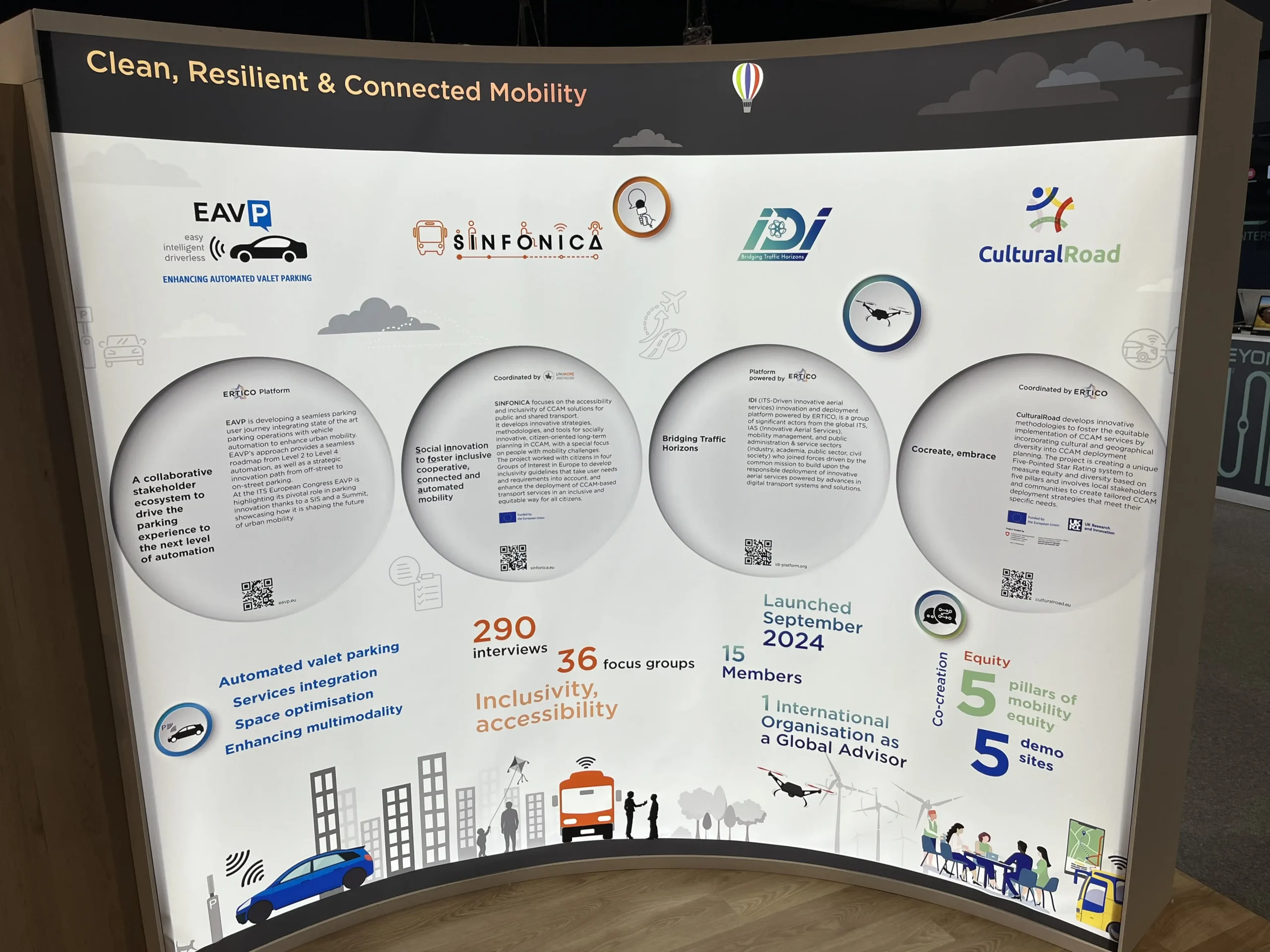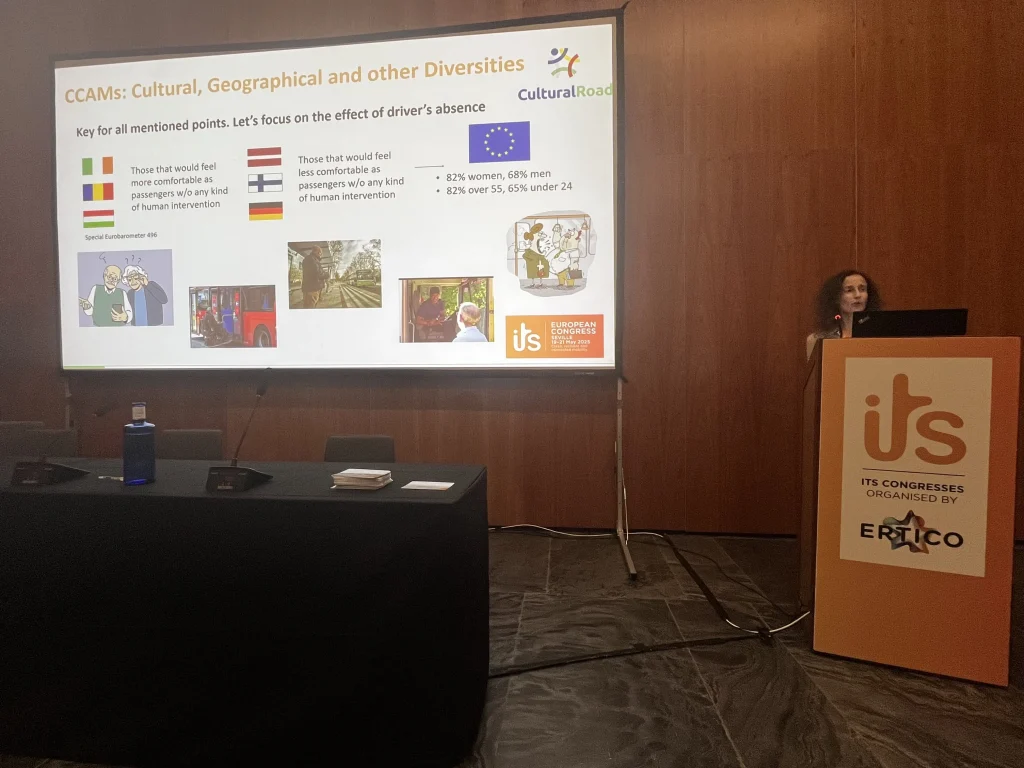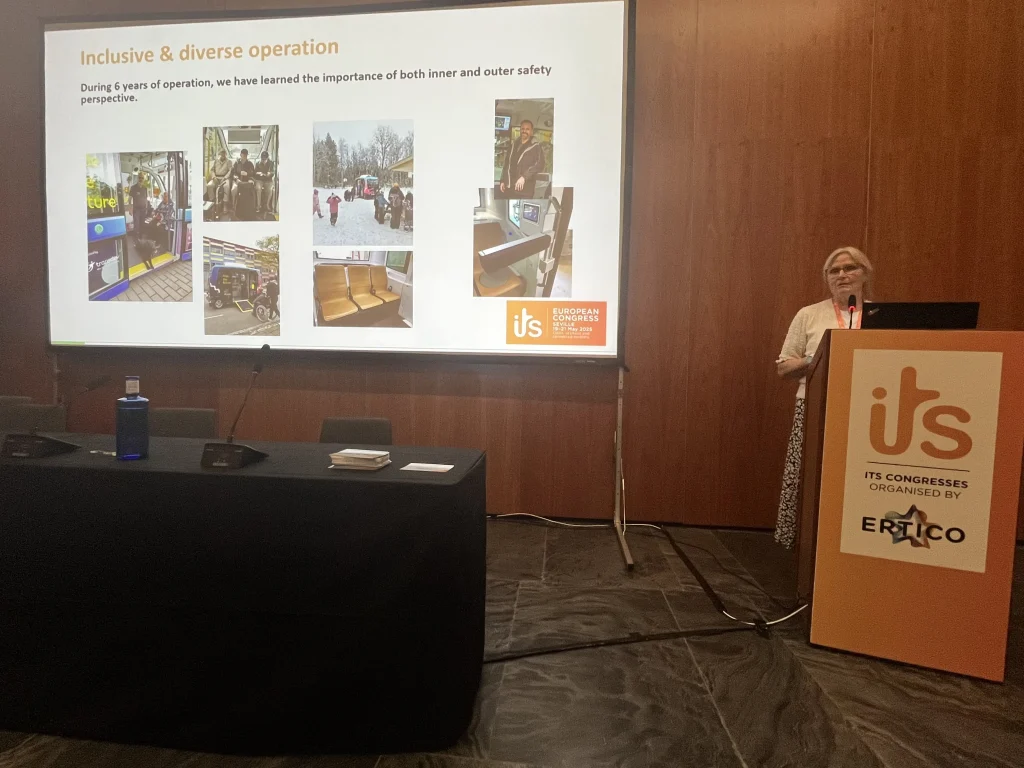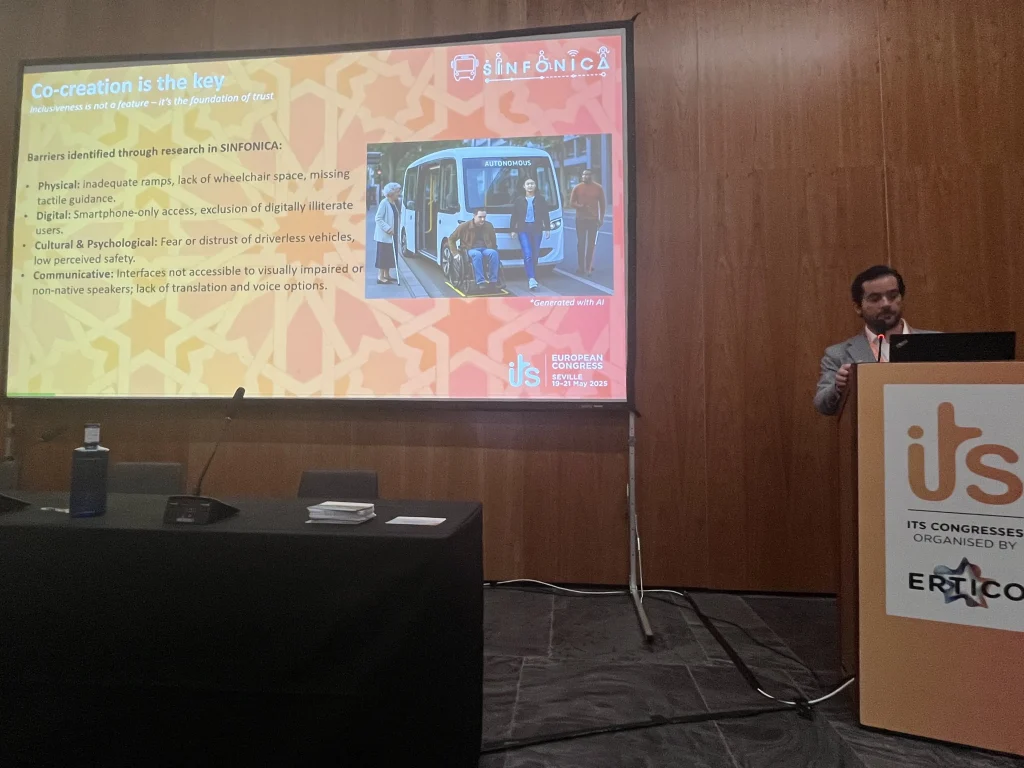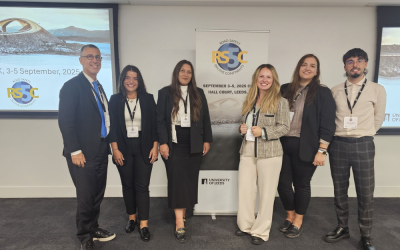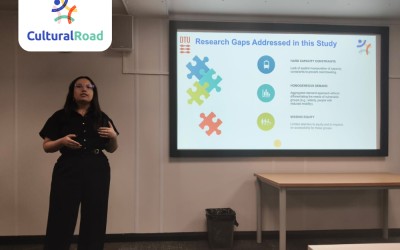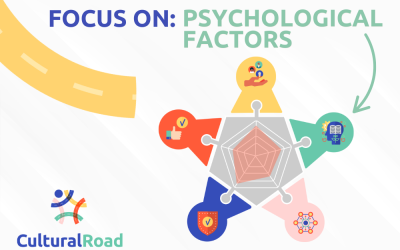The ITS European Congress 2025, held in Seville, Spain, from 19 to 21 May, provided a valuable platform for CulturalRoad to explore inclusive, accessible, and equitable Connected, Cooperative and Automated Mobility (CCAM) solutions. Centred on the theme of clean, resilient, and connected mobility, the 16th edition of the Congress brought together experts, policymakers, and researchers to exchange knowledge and ideas on the future of mobility. CulturalRoad participated in two Special Interest Sessions (SIS), highlighting the importance of ensuring that future mobility systems are fair and accessible to all.
SIS 44 “What could inclusive, diverse, automated public transport look like?” explored how vehicle design and infrastructure can support truly inclusive automated public transport. Moderated by Céline Lefort and John Paddington from CulturalRoad Coordinator ERTICO, the session featured insights from our sister project Diversify-CCAM and the SINFONICA project.
Margarita Martínez-Díaz from the Polytechnic University of Catalonia (UPC) represented CulturalRoad in the session. She emphasised the benefits of CCAM, including increased safety, fewer human errors, greater efficiency and sustainability, while also addressing challenges such as public acceptance, changes in the labour market, and the need for context-sensitive deployment. To ensure user acceptance, CCAM should improve mobility and complement tradition systems already in place. Cultural, geographical, and other types of diversity play an important role, which CulturalRoad is highlighting in its work. For instance, in countries that are more car-dependent such as Ireland, Romania, or Hungary, people have expressed they would feel more comfortable using a driverless automated service, highlighting the importance of taking into account geographical diversity in the deployment of CCAM services.
Anna Anund from the Swedish National Road and Transport Research Institute (VTI) represented Divserify-CCAM and shared some lessons learned from a six-year CCAM trial in Sweden, focusing on safety perceptions and accessibility. She underlined the need to consider features that may seem minor but significantly impact user experience when using the service, such as avoiding hard braking, ensuring on-demand booking is accessible to all users, including those without access to a smartphone, making access to the vehicle easy and having adapted seats for all users, including children.
Dario Irrera from RE:LAB presented SINFONICA’s approach, which places inclusivity at the core of its mission by involving diverse user groups in co-creation activities. The project developed recommendations for inclusive mobility, including having voice commands, visual and audio cues in the vehicles, built-in ramps and dedicated spaces for wheelchairs, options to contact a remote operator and for emergencies, and including vulnerable groups and people with mobility challenges in all development and deployment phases.
CulturalRoad was also represented in SIS 64 “The way to safer roads: insights into road safety and contributing factors”, which provided insights on the factors improving road safety from different EU-funded projects, including EvoRoads and PoDIUM. John Paddington presented the CulturalRoad Five-Pointed Star Rating System and the project’s co-creation approach to better understand how diversity influences the uptake and use of CCAM services. He introduced the project’s methodology to measure safety KPIs, which consider crash rates per distance travelled, injury rates, and the proportion of crashes involving vulnerable users. This will result in a “Safety Equity Score” that reflects whether safety benefits are shared in a fair way across regions and population groups.
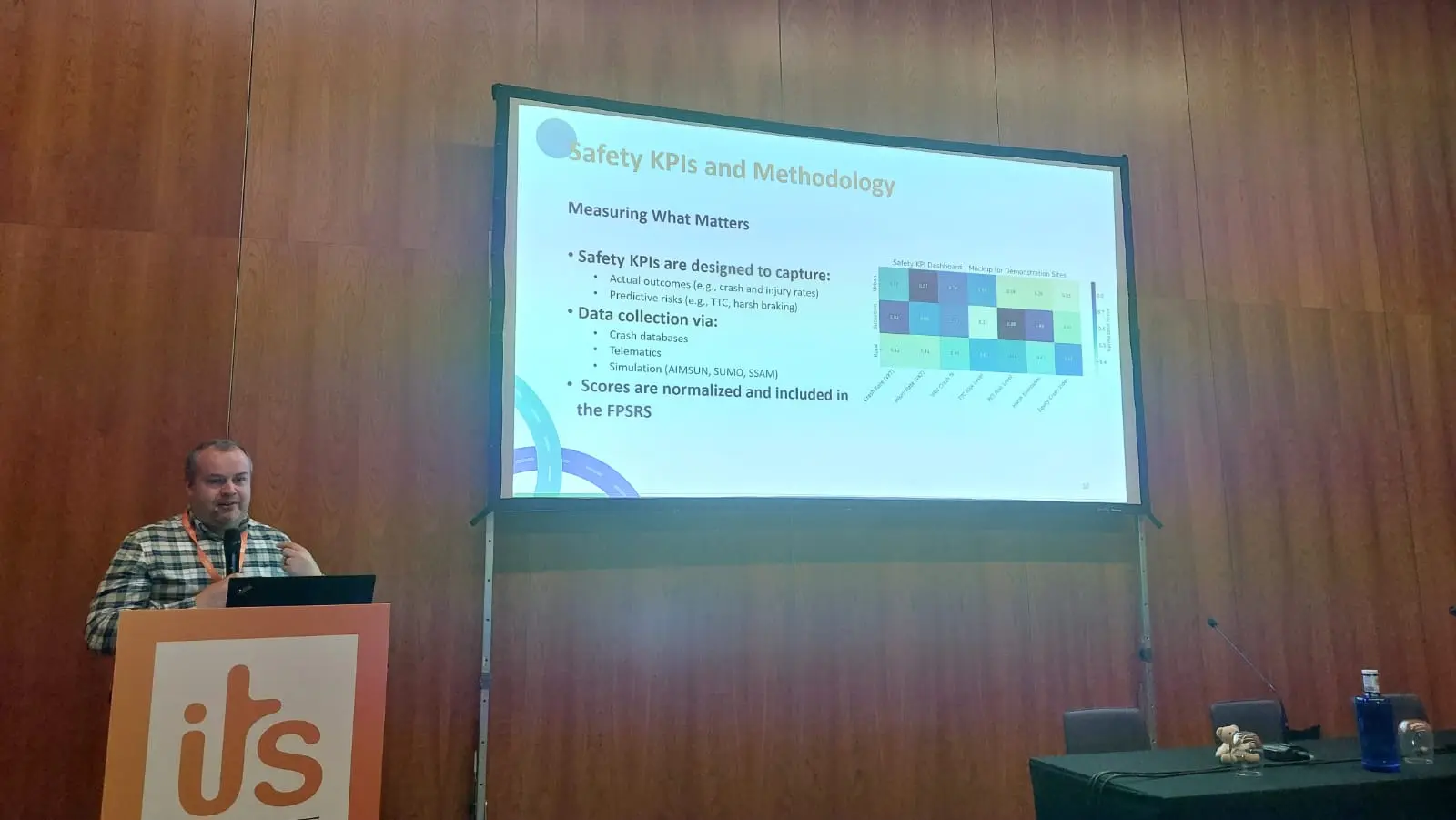
In addition to participating in these sessions, CulturalRoad was represented at the ERTICO stand in the exhibition area throughout the event. Visitors could learn more about the project in greater detail, see our animated video, and visit our website on an interactive screen. This presence helped raise awareness of the project’s goals and fostered exchanges around equitable and inclusive mobility.
